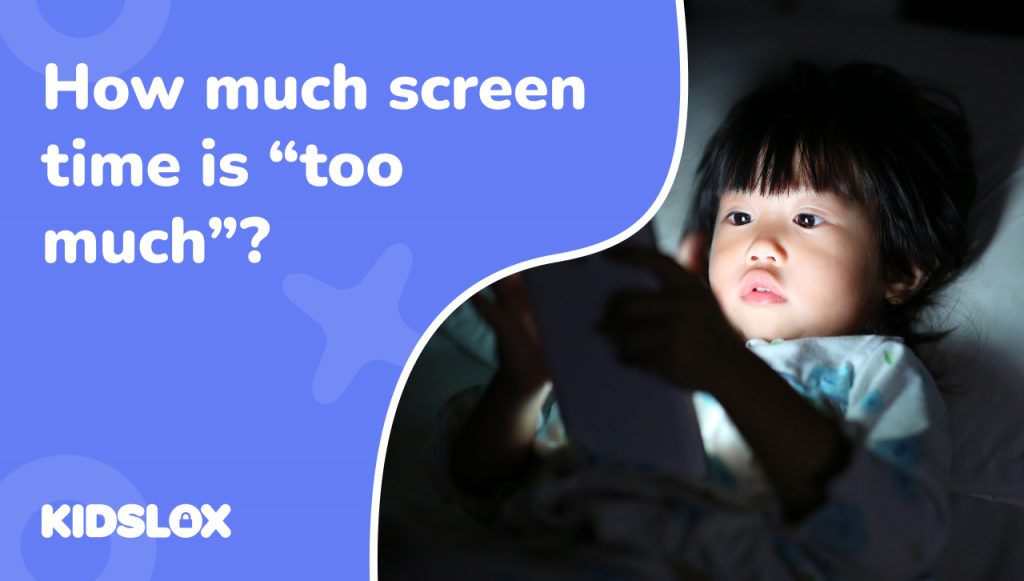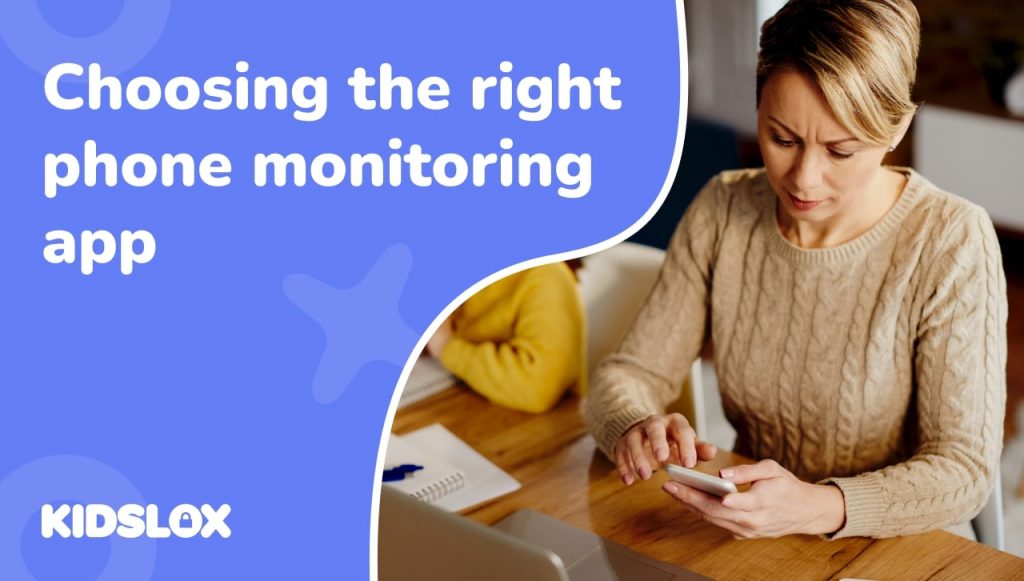How much is too much and what’s the trick to achieving the right balance?
How did screens become so ubiquitous with modern life? They offer entertainment, education, and connection – all at our fingertips. Love or loathe them, they’re here to stay – and it’s crucial we understand how they can impact our health, wellbeing and relationships.
The pervasive presence of screens, especially in the lives of children, has raised concerns about the potential consequences of excessive screen time. As parents, it’s crucial to understand the symptoms and effects of too much screen time on our children’s well-being and to foster a balanced approach to technology use.
So, what are the latest screen time facts and figures? According to recent global data cited in The Independent, on average, we spend 44 per cent of their waking hours looking at screens. Shocked? Read on to learn more.
Young Minds and Excessive Screen Time
Numerous studies have explored the effects of excessive screen time on children’s health and development, with findings highlighting the detrimental impact of prolonged screen exposure on various aspects of well-being, including physical, cognitive, and emotional health. In the same screen time stats round-up from The Independent, it’s claimed that US teens from lower-income households spend an average of over 9 hours a day every day on their screens – 2hrs more per day than peers from higher-income households.
Leading experts in child development and pediatrics have underscored the importance of balancing screen time with other activities that promote physical activity, social interaction, and cognitive stimulation. They emphasize the need for parents to be proactive in monitoring their children’s screen time and setting limits to ensure a healthy balance between technology use and other pursuits.
Understanding the Effects of Too much Screen Time
Prolonged exposure to screens can have effects that manifest in various ways, both physical and behavioral. Here are some things to look out for if you’re worried that your child spends too much time with their screens.
Physical Symptoms
- Eye Strain and Discomfort: Prolonged screen time can lead to eye fatigue, dryness, and discomfort, commonly known as digital eye strain. Symptoms include eye fatigue, dryness, and discomfort, but can be alleviated through proper eye care practices, such as the 20-20-20 rule and regular eye exams.
- Postural Issues and Musculoskeletal Problems: Sitting hunched over a screen for extended periods can contribute to poor posture and musculoskeletal issues. Research suggests that children who have too much screen time can develop neck and back pain. Repetitive strain injuries can also be a problem associated with excessive screen time and device over use.
Behavioral impacts
- Irritability and Mood Swings: Excessive screen time has been linked to changes in mood and behavior, with children becoming irritable, agitated, or withdrawn when screen time is interrupted or restricted.
- Decreased Attention Span: The constant stimulation from screens can hinder a child’s ability to focus and concentrate, leading to shorter attention spans and difficulty staying engaged in tasks that require sustained mental effort. Studies also show that this can impact a child’s scholastic performance.
- Agitation and Restlessness: Screen time, particularly interactive or fast-paced content, can overstimulate a child’s brain, resulting in heightened levels of agitation and restlessness, making it challenging to unwind or relax.
While screens offer a multitude of benefits, excessive screen time can have detrimental effects on various aspects of a child’s development, including cognitive, social, and emotional well-being.
Cognitive Impacts
- Reduced Academic Performance: Studies have shown a negative correlation between excessive screen time and academic achievement, with prolonged exposure to screens hindering cognitive development and learning outcomes.
- Impaired Problem-Solving Skills: Excessive screen time can limit opportunities for hands-on exploration and problem-solving, leading to a reliance on passive entertainment rather than active engagement in critical thinking activities.
Social and Emotional Effects
- Difficulty in Social Interactions: Excessive screen time can impede the development of crucial social skills, such as communication, and conflict resolution, leading to difficulties in forming meaningful relationships with peers and family members.
- Increased Risk of Anxiety and Depression: Research has found a correlation between excessive screen time and mental health issues, including anxiety and depression, as prolonged exposure to screens can exacerbate stress and feelings of isolation.
Understanding the Link between Screen Time and Sleep
Screens emit blue light, which can disrupt the body’s natural sleep-wake cycle, making it difficult for children to fall asleep and stay asleep. Excessive screen time before bedtime has been linked to poor sleep quality and daytime drowsiness, impacting overall health and well-being.
To mitigate the effects of excessive screen time on sleep, parents can implement strategies to promote healthy sleep hygiene, such as establishing a consistent bedtime routine, creating a screen-free bedroom environment, and limiting screen time in the hours leading up to bedtime.
A good way to set these healthy habits in motion is to provide your child with a traditional style alarm clock, encourage reading and meditation before bed and setting up a charging station for devices outside of the bedroom.
Encouraging physical exercise and an variety of offline hobbies and interests can also help children to sleep better while balancing their wellbeing and mental health outside of screens.
What other risks are associated with too much screen time?
The more time spent online, the more opportunities there are for children and teenagers to run into the murkier side of the internet.
Cyberbullying and screen time
- Excessive screen time exposes children to the risk of cyberbullying, which involves using digital communication tools to harass, intimidate, or threaten others. Cyberbullying can take various forms, including spreading rumors, sharing embarrassing photos or videos, or sending hurtful messages. Unlike traditional forms of bullying, cyberbullying can occur 24/7, reaching victims even in the safety of their homes, and leaving a digital trail that can have lasting psychological effects.
- Psychological Impact: Victims of cyberbullying may experience significant psychological distress, including anxiety, depression, low self-esteem, and suicidal thoughts. The anonymity and perceived lack of consequences in online environments can embolden bullies to engage in more aggressive and harmful behaviors, exacerbating the impact on victims’ mental health.
- Long-term Consequences: Research suggests that cyberbullying can have long-term consequences for both victims and perpetrators. Victims may struggle with trust issues, social withdrawal, and academic difficulties, while perpetrators may face legal repercussions and challenges in forming healthy relationships. Addressing cyberbullying requires proactive intervention from parents, educators, and policymakers to create safe and supportive online environments for children.
- Online Predation: Excessive screen time also increases children’s vulnerability to online predation, where individuals use the internet to exploit, manipulate, or groom children for sexual purposes. Online predators often target vulnerable children through social media platforms, gaming communities, chat rooms, and messaging apps, posing as peers or authority figures to gain their trust.
- Grooming Tactics: Online predators employ various grooming tactics to establish relationships with children, such as flattery, manipulation, and deception. They may gradually escalate their interactions to more intimate or sexual content, exploiting children’s curiosity, naivety, or desire for validation. Grooming can lead to offline encounters or instances of sexual abuse, putting children at risk of physical and psychological harm.
- Parental Vigilance: Protecting children from online predation requires parental vigilance and active monitoring of their online activities. Parents should educate children about online safety, teach them to recognize warning signs of predatory behavior, and establish clear guidelines for interacting with strangers online. Utilizing parental control tools and privacy settings can also help restrict access to inappropriate content and prevent unauthorized contact with strangers.
- Reporting and Intervention: Encouraging open communication and trust between parents and children is crucial for addressing online predation effectively. Children should feel comfortable confiding in their parents or trusted adults if they encounter suspicious or concerning behavior online. Prompt reporting of suspicious activity to law enforcement or relevant authorities can facilitate swift intervention and protect children from potential harm.
- Educational Initiatives: Schools and educational institutions play a vital role in raising awareness about the dangers of cyberbullying and online predation and promoting digital literacy skills among students. Incorporating cyber safety education into the curriculum can empower children with the knowledge and skills to navigate online risks responsibly and seek help when needed. Teachers and school counselors can also provide support and guidance to students affected by cyberbullying or online predation, fostering a safe and supportive learning environment for all.
By addressing the dangers associated with excessive screen time, particularly concerning cyberbullying and online predation, parents, educators, and policymakers can work together to create safer and more responsible online environments for children. Through education, proactive intervention, and support networks, we can empower children to navigate the digital world safely and responsibly, minimizing the risks of harm and promoting their overall well-being.
Empowering Parents: Strategies to Limit Screen Time
As parents, it’s essential to take an active role in managing our children’s screen time and promoting healthy tech habits. By implementing strategies to limit screen time and encourage alternative activities, we can help our children develop a balanced relationship with technology.
Setting Healthy Boundaries
- Establishing Screen Time Rules and Routines: Set clear guidelines for screen time usage, including designated time limits and screen-free zones in the home. Encourage children to take regular breaks from screens and engage in other activities, such as outdoor play, reading, and creative arts.
- Encouraging Alternative Activities: Provide opportunities for children to explore non-screen-based activities that promote physical activity, social interaction, and creative expression. Encourage hobbies and interests that stimulate the mind and body, such as sports, arts and crafts, music, and imaginative play.
Modeling Healthy Screen Habits
- Being Mindful of Personal Screen Time Use: As role models for our children, it’s essential to be mindful of our own screen time habits and demonstrate responsible use of technology. Limit your own screen time in front of children and prioritize quality time spent together engaging in meaningful activities.
- Engaging in Screen-Free Family Time: Create opportunities for screen-free family time, such as family meals, game nights, and outdoor adventures. Use these moments to connect with one another, foster meaningful conversations, and strengthen family bonds without the distraction of screens.
Utilizing Parental Control Tools and Apps
- Exploring Features of Screen Time Management Apps: Take advantage of parental control tools and apps that allow you to monitor and manage your children’s screen time effectively. Kidslox can help set screen time limits, block inappropriate content, and track usage patterns. It even includes a new AI driven feature that will notify you if it finds nude content on your child’s device.
- Finding the Right Balance Between Monitoring and Trust: While it’s essential to monitor your children’s screen time and online activities, it’s also important to foster trust and open communication. Have ongoing conversations with your children about responsible technology use and the importance of setting boundaries to ensure their safety and well-being.
Fostering a Balanced Approach to Technology Use
Finding the right balance between screen time and other activities is key to promoting healthy development and well-being in children. By emphasizing quality over quantity and promoting digital literacy and critical thinking skills, we can empower our children to navigate the digital world responsibly.
Emphasizing Quality Over Quantity
- Encouraging Educational and Interactive Content: Encourage children to engage with high-quality, age-appropriate content that promotes learning, creativity, and critical thinking skills. Look for educational apps, games, and videos that align with your child’s interests and developmental stage.
- Prioritizing Offline Activities and Play: Balance screen time with a variety of offline activities that promote physical activity, social interaction, and imaginative play. Encourage children to explore their interests, pursue hobbies, and spend time outdoors engaging with the natural world.
Promoting Digital Literacy and Critical Thinking Skills
- Teaching Children to Evaluate Online Content: Teach children how to critically evaluate online content for accuracy, credibility, and relevance. Encourage them to question and analyze information they encounter online and to seek out reliable sources for research and learning.
- Encouraging Responsible Digital Citizenship: Instill in children the importance of responsible digital citizenship, including respectful communication, online safety, and ethical use of technology. Teach them to be mindful of their digital footprint and to engage with technology in ways that promote positive social interactions and community engagement.
In conclusion, excessive screen time can have significant implications for children’s health and development, impacting their physical, cognitive, and emotional well-being. By understanding the signs and effects of too much screen time and implementing strategies to promote a healthy balance of technology use, parents can empower their children to navigate the digital world responsibly and foster a balanced approach to technology use.





